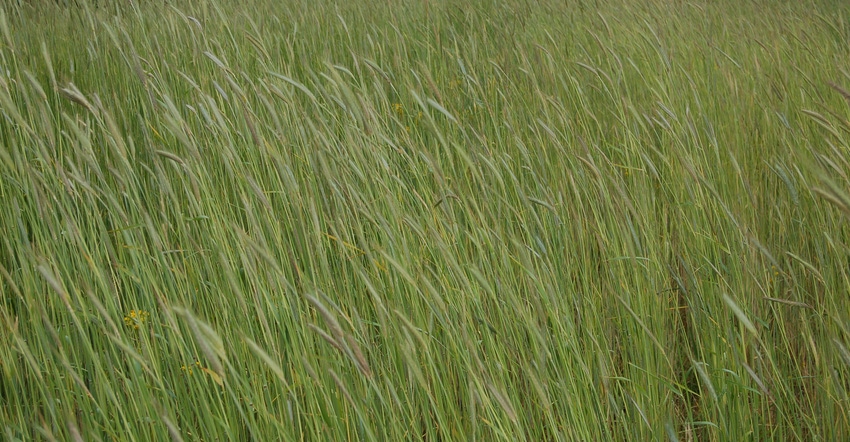
Across Indiana, farmers who use cover crops will plant their 2018 fall cover crops soon. With almost a million acres across Indiana, cover crops have become the third-largest crop in the state — trailing only corn and soybeans. As you prepare to plant cover crops this fall, there are several factors that can help determine the rate of seed to use.
How you seed your cover crop plays a major role in determining how much seed you need to plant. You should use one rate if you fly-on your seed with a plane or helicopter, a different rate if you use a drill, another rate if you use a precision planter, and possibly yet another rate if you broadcast seed into standing crop with a high-clearance rig or have a fertilizer dealer mix it with fertilizer and broadcast it on the surface. Don Donovan, Natural Resources Conservation Service district conservationist based in Parke County, recommends farmers contact their local NRCS office for assistance with determining rates based on seeding method.
NRCS has a cover crop rate calculator that can determine how much seed you will need to plant based on your planting method. This tool determines rates of pure live seed based on the final mature stand you wish to obtain. The seeding calculator is based on using a drill as the planting method, with rates increased for aerially seeded methods. The calculator will also determine how much seed of each species in a mix you need to plant.
Donovan recommends confirming your rates using this tool if you’re receiving USDA cost-share program assistance for your cover crops. The rates recommended by the calculator meet NRCS standards. If you need help with your cover crop mix, stop by your local NRCS office and ask them to use the calculator to develop the best plan for your farm.
Other seeding rate factors
Seeding rates are also dictated by what you expect your cover crop to do, Donovan says. For example, if you are new to cover crops, you might want to use a lower rate of cereal rye. A lower rate will make planting and termination easier in the spring. However, you may not have complete soil coverage from residue of the terminated rye throughout the growing season.
If you wish to have seasonlong soil coverage for weed control, moisture conservation and to maintain a consistent soil temperature, you will need to plant a higher rate of rye to have a denser stand, Donovan says.
Note, however, that some farmers who have used cover crops for a long time have backed off very high rates, especially with cereal rye. They find there is less potential for problems with slugs, voles and other springtime pests when the stand isn’t quite as thick. If you have an experienced no-tiller and cover crop user in your area, consult him or her to see what rate of rye and other cover crops he or she is seeding.
Seeding rates of cover crops are just as important as seeding rates of your cash crops. It all boils down to the No. 1 rule of cover crops, Donovan says: “Treat your cover crop like you treat your cash crop.” By doing so, you’ll take a major step in being successful in your cover crop journey, he concludes.
About the Author(s)
You May Also Like




